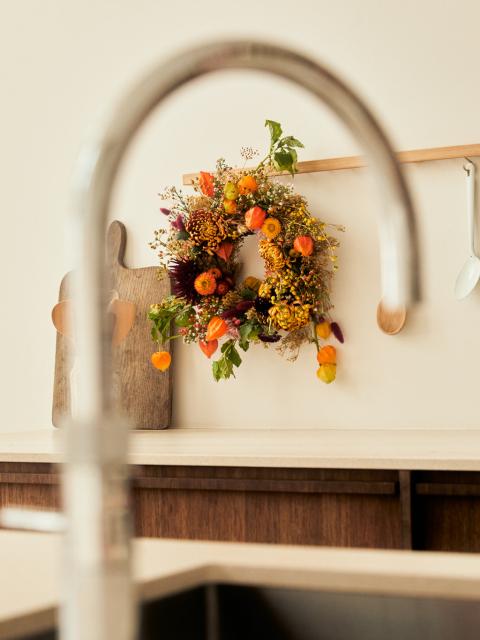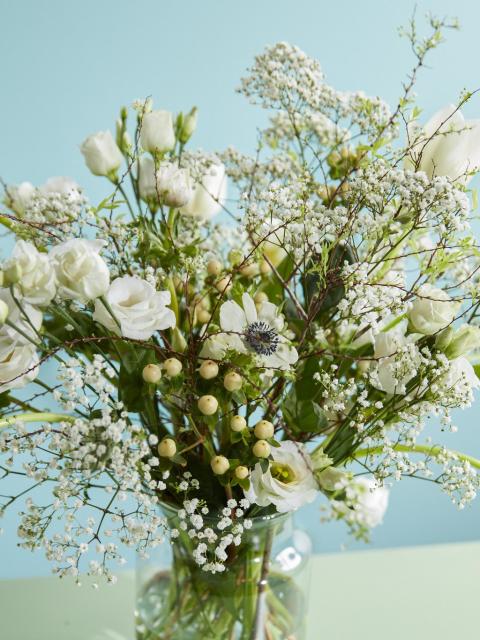hypericum: characteristics and flowering
Hypericum. popularly known as St John's wort, is part of the stag hay family (Hypericaceae). Hypericum is hardy, often evergreen and easy to care for. This plant blooms between June and August with golden yellow flowers, which usually have five petals and long, golden yellow stamens. In autumn, stylish, white, red or brown berries grow on the plant. Depending on the variety, Hypericum grows 30-150 centimetres tall.
Hypericum species
There are over 400 species of Hypericum worldwide. Some species (perennials or semi-shrubs) grow no taller than 30 centimetres, while others (shrubs) grow up to 150 centimetres. There are deciduous species, but also fully evergreen species. The Hypercium species below are the best known:
- Hypericum perforatum: this is the ‘common St John's wort’. This species has small, bright yellow flowers with long stamens and a sturdy, upright growth habit. In autumn, small, dark red or brown berries appear on this species. This species grows about 30-80 centimetres tall.
- Hypericum calycinum: this low-growing species can be recognised by its large yellow flowers, abundance of stamens and wide blooms, making it ideal as a ground cover. The berries of this species are usually red to dark brown. This species grows about 30-40 centimetres high.
- Hypericum androsaemum: this species is known for its striking, colourful berries that are bright red to deep red. The flowers of this species are small and less conspicuous than those of the other species, but the stems do have a striking, reddish colour. This species grows about 100 centimetres tall.
- Hypericum inodorum: this species is known for its attractive large bright yellow flowers. The dark red or sometimes almost black berries are relatively large and have an attractive appearance. This species grows about 100 centimetres high.
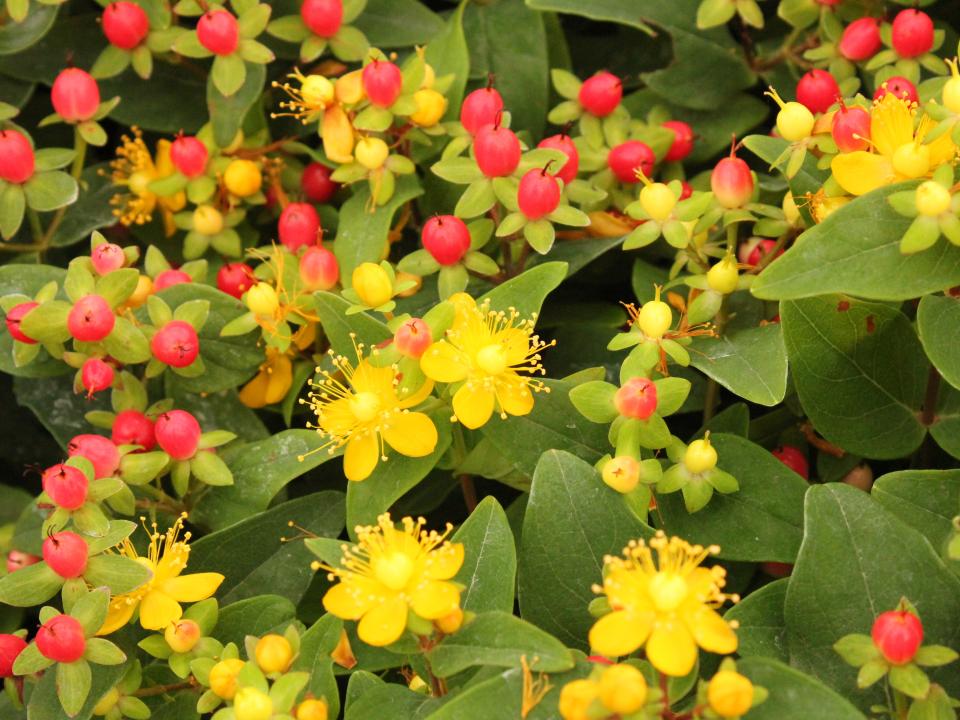
Caring for hypericum as a cut flower
If you've brought a beautiful bunch of St John's wort home, you'll want to enjoy it for as long as possible. Check out this article full of tips and tricks to keep cut flowers healthy and see our advice below on caring for Hypericum in your vase:
- Cut the flower stems diagonally with a sharp, clean knife.
- Fill a clean vase with a generous layer of lukewarm water.
- Remove any lower leaves so that no petals hang into the vase water.
- Add cut flower food to prolong the Hypericum's shelf life.
- Hypericums are thirsty, so fill your vase with extra water if necessary.
- Do not put the vase in a draught, in full sun or next to ripening fruit.
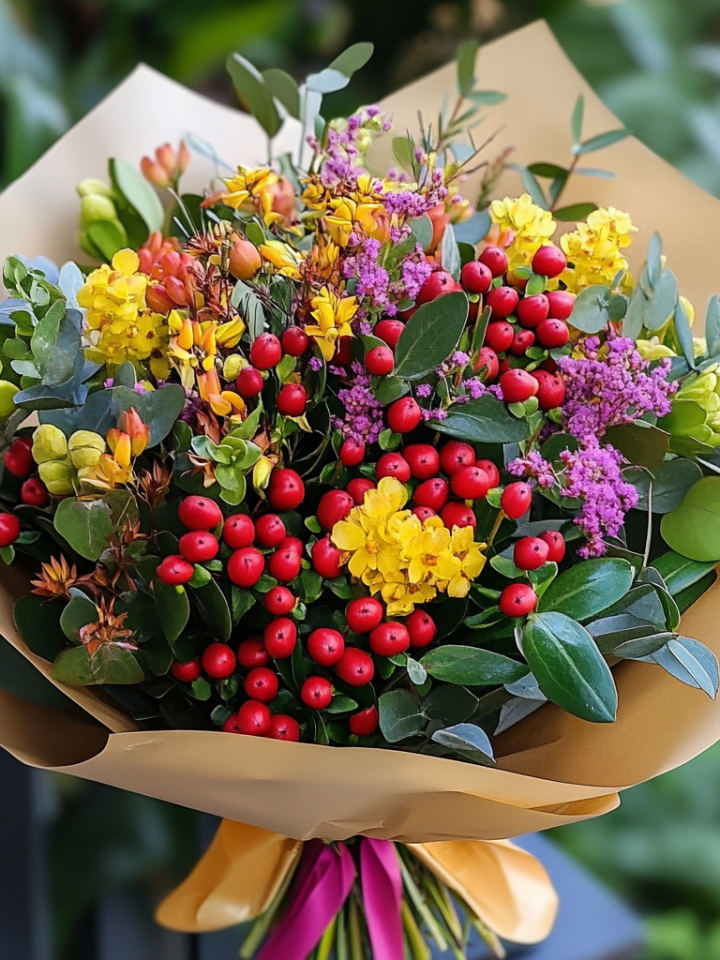
How and when you should plant Hypericum
These low-maintenance, hardy, beautiful flowers with their dainty berries are a popular garden plant. here's the information you'll need to get planting:
- Find tips, information and step-by-step plans for planting garden plants here.
- Hypericum should preferably be planted in the autumn (September/October) or in spring (April/May) when the chance of severe frost has passed.
- Make sure you enrich the soil with organic material. Hypericum likes well-drained soil and that's not heavy or too clay-rich.
Hypericum: location and caretaking
Hypericum is an easy, hardy plant that you can enjoy all year round, making it a popular choice in many kinds of garden. See our tips on the best planting locations and caretaking tips here:
- Hypericum thrives best in a spot in full sun or semi-shade. The more sunlight Hypericum gets, the more profuse its flowering will be.
- Hypericum prefers well-drained soil, to prevent root rot.
- Hypericum likes humus-rich soil. Give the plant organic fertiliser in spring for optimum growth and flowering.
- Once well-rooted, Hypericum is resistant to drought. Water the plant during any long, dry periods.
How and when should you prune Hypericum?
For any species of this plant, in the winter months you can just leave the spent plant as it is, with no need to prune. Any snowfall will look beautiful on the shrubs. This helps the shrub protect itself from frost.
- For taller shrubs (such as Hypericum androsaemum), in spring (March) you can prune back to about 10-20 centimetres above the ground to encourage rich flowering. Hypericum will regrow on its own. Be careful not to prune in autumn, as the plant may freeze in winter.
- Low-growing varieties of Hypericum (such as Hypercium calycinum) hardly need pruning. You can prune them back slightly in spring (March) so that the shrub keeps its shape, and you remove any dead and damaged branches.
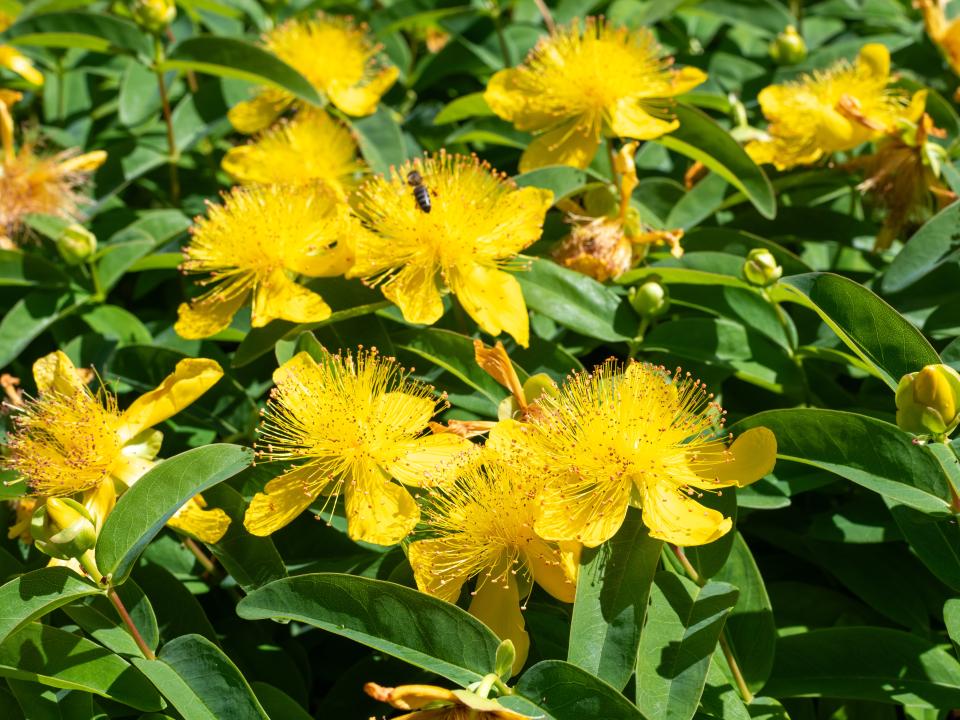
Hypericum symbolism
St John's wort is often used as a remedy for insomnia or to combat depressive symptoms. Back in the day, it was nicknamed ‘chase the devil’ and was used as a defence against witches, magic and other woes. Not surprisingly, Hypericum still symbolises protection, healing, strength and recovery.
Hypericum origins
Hypericum is native to Europe, western and central Asia and North America. It is native to temperate climates and grows mainly in grasslands, forests and roadsides. Hypericum was already known in Europe in ancient times and was used by the Romans and Greeks for its medicinal properties. Today, hypericum is a popular garden plant and cut flower worldwide. Not only is the plant valued for its external characteristics, St John's wort is also used as an herbal medicine to combat depressive symptoms.
Where does the name St. John's wort come from?
Hypericum is also called St John's Wort because its flowers used to be harvested around St John's Day on 24 June. On this day, Christianity celebrates the birthday of St John the Baptist.
Is hypericum poisonous?
No, as far as we know, Hypericum is not toxic to humans or animals. However, it's not recommended to eat the berries of Hypericum (for both humans and animals). If large quantities are ingested, symptoms such as gastrointestinal distress. Intensive skin contact with Hypericum can cause photosensitivity in some people and animals, such as horses. if in doubt, always consult a vet or doctor.







